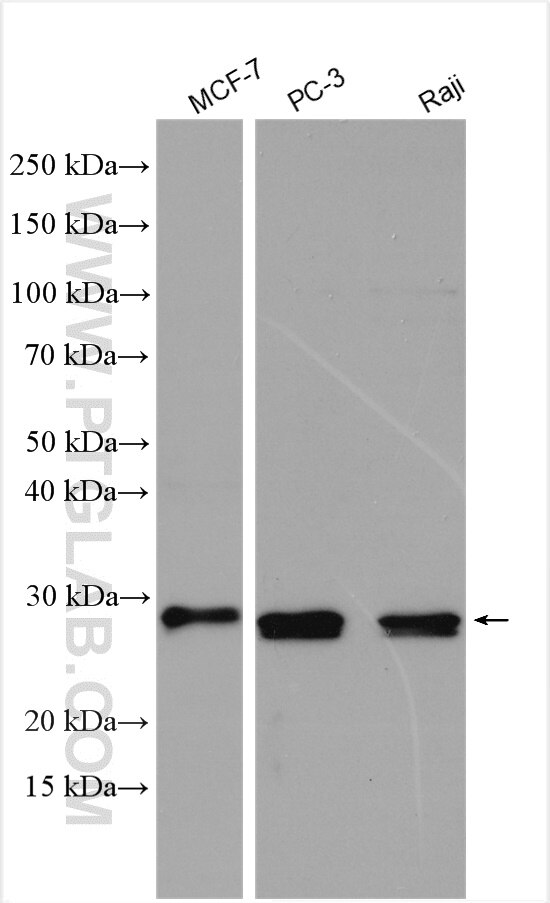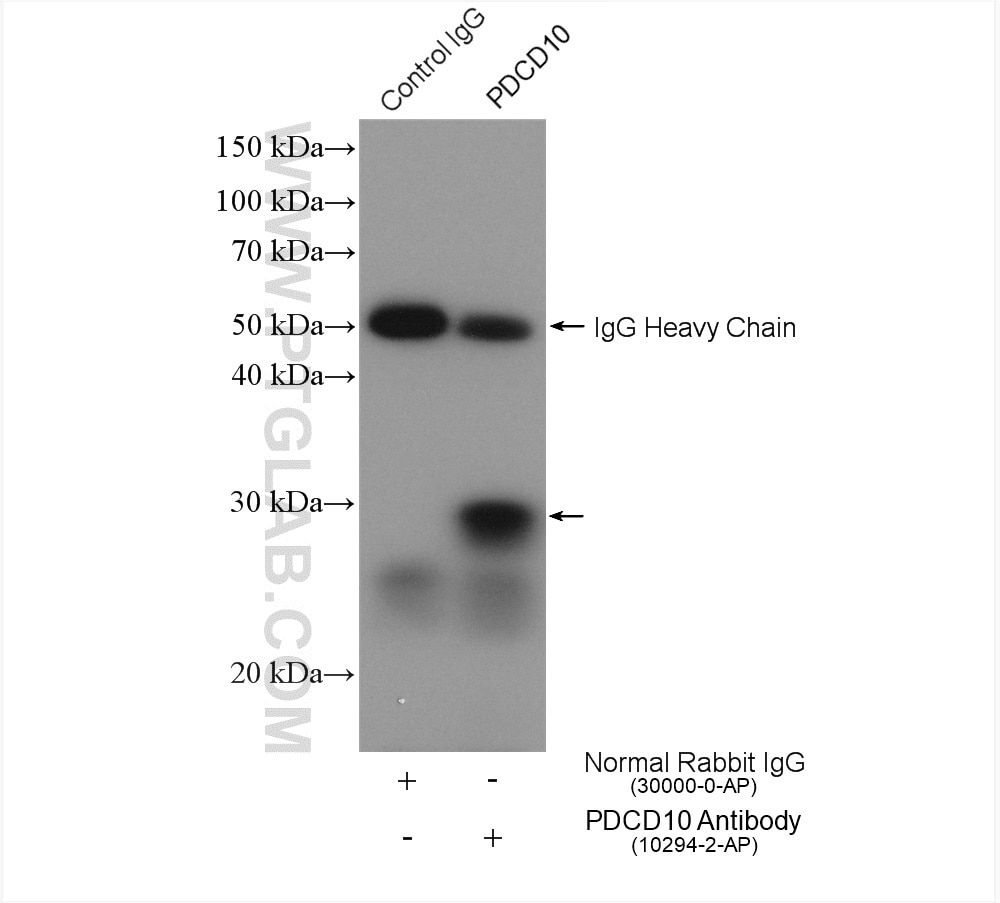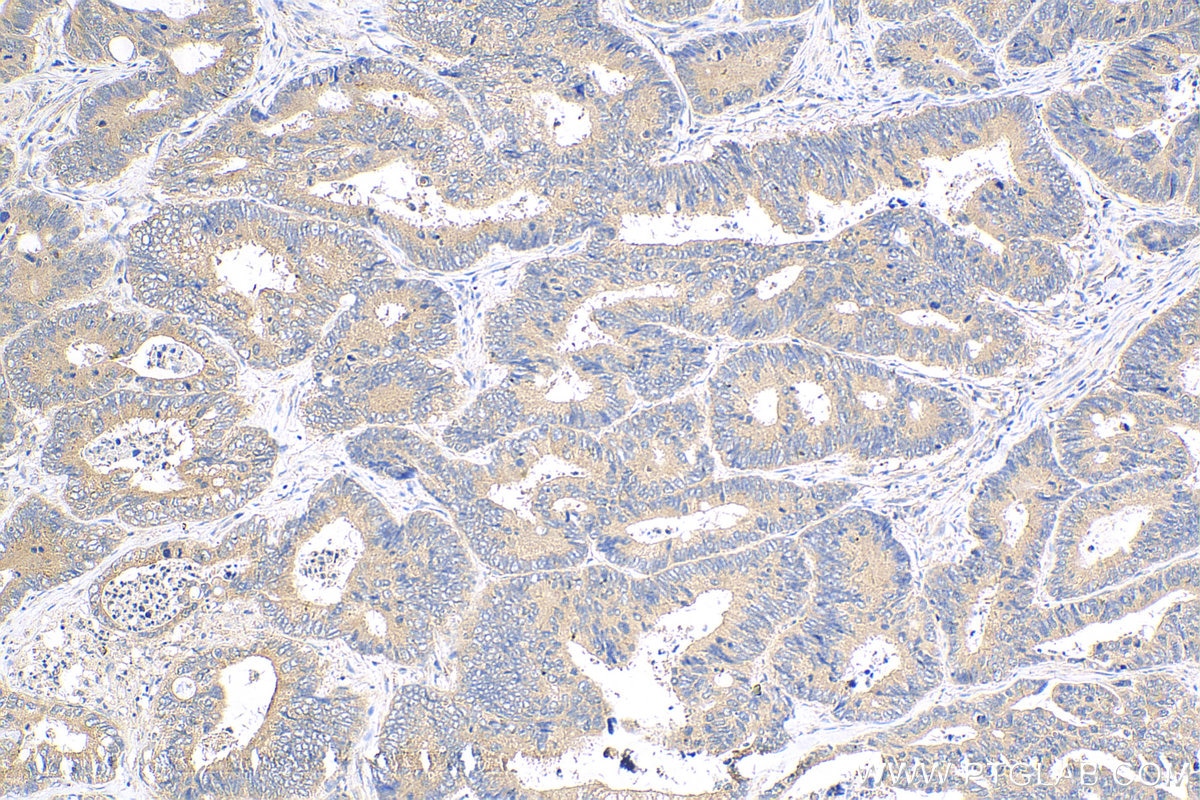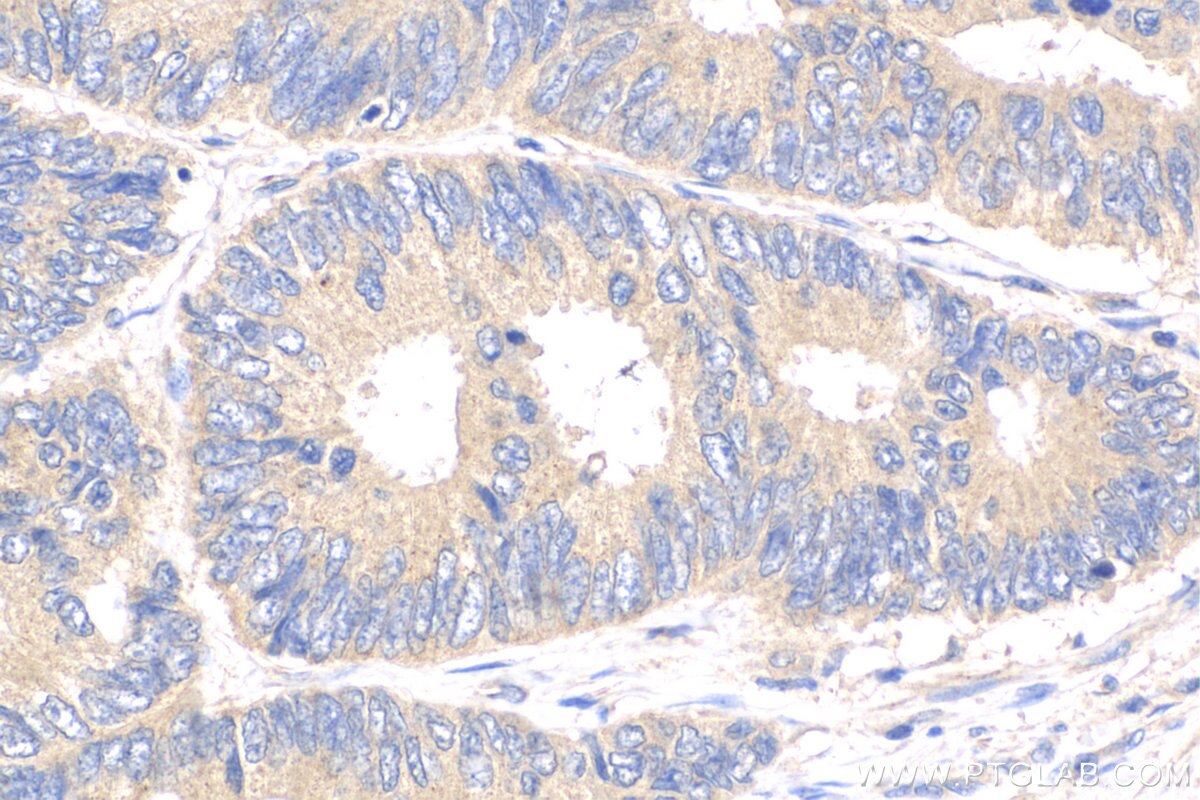Validation Data Gallery
Tested Applications
| Positive WB detected in | MCF-7 cells, PC-3 cells, Raji cells |
| Positive IP detected in | MCF-7 cells |
| Positive IHC detected in | human colon cancer tissue Note: suggested antigen retrieval with TE buffer pH 9.0; (*) Alternatively, antigen retrieval may be performed with citrate buffer pH 6.0 |
Recommended dilution
| Application | Dilution |
|---|---|
| Western Blot (WB) | WB : 1:500-1:1000 |
| Immunoprecipitation (IP) | IP : 0.5-4.0 ug for 1.0-3.0 mg of total protein lysate |
| Immunohistochemistry (IHC) | IHC : 1:50-1:500 |
| It is recommended that this reagent should be titrated in each testing system to obtain optimal results. | |
| Sample-dependent, Check data in validation data gallery. | |
Published Applications
| KD/KO | See 10 publications below |
| WB | See 16 publications below |
| IHC | See 3 publications below |
| IF | See 4 publications below |
| IP | See 1 publications below |
Product Information
10294-2-AP targets CCM3/PDCD10 in WB, IHC, IF, IP, ELISA applications and shows reactivity with human, mouse, rat samples.
| Tested Reactivity | human, mouse, rat |
| Cited Reactivity | human, mouse, rat |
| Host / Isotype | Rabbit / IgG |
| Class | Polyclonal |
| Type | Antibody |
| Immunogen | CCM3/PDCD10 fusion protein Ag0348 相同性解析による交差性が予測される生物種 |
| Full Name | programmed cell death 10 |
| Calculated molecular weight | 25 kDa |
| Observed molecular weight | 25-30 kDa |
| GenBank accession number | BC002506 |
| Gene Symbol | PDCD10 |
| Gene ID (NCBI) | 11235 |
| RRID | AB_2162153 |
| Conjugate | Unconjugated |
| Form | Liquid |
| Purification Method | Antigen affinity purification |
| UNIPROT ID | Q9BUL8 |
| Storage Buffer | PBS with 0.02% sodium azide and 50% glycerol , pH 7.3 |
| Storage Conditions | Store at -20°C. Stable for one year after shipment. Aliquoting is unnecessary for -20oC storage. |
Background Information
PDCD10, also named CCM3 and TFAR15, belongs to the PDCD10 family. PDCD10 promotes cell proliferation, increases MAPK activity and modulates apoptotic pathways. PDCD10 is important for cell migration and for normal structure and assembly of the Golgi complex. PDCD10 is required for normal angiogenesis, vasculogenesis and hematopoiesis during embryonic development, moreover, defects in PDCD10 showed abnormal cardiovascular development. Catalog#10294-2-AP is a rabbit polyclonal antibody raised against the full-length PDCD10 of human origin.
Protocols
| Product Specific Protocols | |
|---|---|
| WB protocol for CCM3/PDCD10 antibody 10294-2-AP | Download protocol |
| IHC protocol for CCM3/PDCD10 antibody 10294-2-AP | Download protocol |
| IP protocol for CCM3/PDCD10 antibody 10294-2-AP | Download protocol |
| Standard Protocols | |
|---|---|
| Click here to view our Standard Protocols |
Publications
| Species | Application | Title |
|---|---|---|
Nat Cell Biol CCM3 is a gatekeeper in focal adhesions regulating mechanotransduction and YAP/TAZ signalling.
| ||
J Clin Invest Mutations in 2 distinct genetic pathways result in cerebral cavernous malformations in mice.
| ||
Development Ccm3, a gene associated with cerebral cavernous malformations, is required for neuronal migration.
| ||
Aging (Albany NY) PDCD10 promotes the aggressive behaviors of pituitary adenomas by up-regulating CXCR2 and activating downstream AKT/ERK signaling
| ||
J Cell Sci CCM3/PDCD10 stabilizes GCKIII proteins to promote Golgi assembly and cell orientation.
| ||
Hum Mutat A single-center study on 140 patients with cerebral cavernous malformations: 28 new pathogenic variants and functional characterization of a PDCD10 large deletion . |



